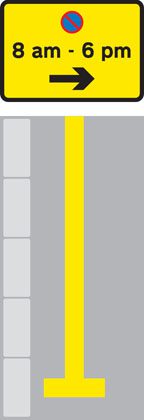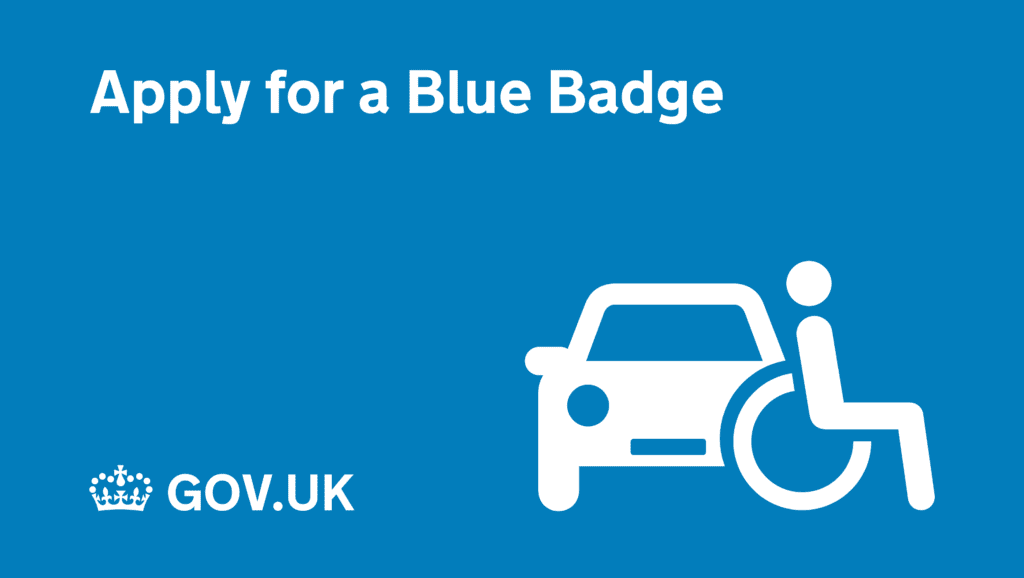
On your travels, you’ll come across various signs and road markings. They might seem bewildering at first, especially before you start driving. But, once you get familiar with The Highway Code, these symbols become clearer.
For drivers, understanding yellow lines is crucial. These lines, either single or double, are found alongside certain roads. But what do they signify? Essentially, they indicate a restriction on waiting.
However, this is just the beginning. There are various nuances to these rules that you need to grasp to avoid fines. We’re here to guide you through the ins and outs of single and double yellow lines, so let’s get started!
What are Yellow Lines?
Yellow lines are crucial in guiding drivers about where and when they can stop or wait on a road. This rule covers the entire road space, including the carriageway, pavement, and kerb. ‘Waiting’ here means several things:
- Leaving your car parked and unattended.
- Staying in your car while it’s parked.
- Stopping to drop off or pick up someone.
- Using the space to load or unload items from your car.
The key aspect of these yellow line rules is understanding whether they are in effect at all times or only during certain hours or days. This is where the number of yellow lines comes into play. A single yellow line suggests some time-related restrictions, whereas a double yellow line usually means no waiting at any time.
To further understand the specific restrictions, you should look for nearby signs indicating the hours of operation for these rules. These signs will provide detailed information about the times and days when the restrictions apply, helping you avoid penalties and fines.
It’s important to remember that these rules are implemented for smooth traffic flow and safety, so adhering to them is not just a legal requirement but also a contribution to better road management.
Single Yellow Lines
Understanding Single Yellow Lines
Single yellow lines are a sign that waiting restrictions are active, but only at specific times. These lines are usually found in areas prone to congestion, helping to maintain smooth traffic flow. To determine the exact times when you can or can’t wait or park on these roads, nearby signage is your best guide.

Image source: Crown copyright (Open Government Licences)
Understanding the Signs
- Timing Details: Signs near single yellow lines will have details about the restriction times. These could be specific days of the week (e.g., ‘Monday – Friday‘) or hours of the day (e.g., ‘8 am – 6 pm‘).
- Daily Applicability: If a sign indicates times rather than days, this usually means the restrictions apply daily, including weekends and bank holidays (unless specified otherwise).
What to Do When You Encounter Single Yellow Lines
- Check the Signage: Always look for and read the nearby signs to understand the specific restrictions.
- Abide by the Times: You can park or wait outside the prohibited times stated on the signs.
- Stay Alert to Exceptions: Remember, exceptions might be noted for bank holidays or weekends.
- Compliance is Key: Even if the road seems empty, it’s essential to adhere to the restrictions as indicated.
Remember: The key to navigating single yellow lines is to always check and follow the local signage. This ensures you stay within the law and contribute to better traffic management.
Double Yellow Lines
Understanding Double Yellow Lines
Double yellow lines are much more straightforward than their single-lined counterparts. If you find these lines along the roadside, it means no waiting or parking is allowed at any time. They are a common sight in areas where constant access is needed or where parked cars could cause significant obstruction.

Image source: Crown copyright (Open Government Licences)
Checking for Exceptions
- Look for Signage: In rare instances, there might be seasonal exceptions or specific time-related relaxations. Always check nearby signs for any such information.
- No Signs Present: If there are no signs, it’s a safe bet that no waiting or parking is permitted under any circumstances.
What to Do in Case of Doubt
- Contact Local Authorities: For clarity on rules specific to your area, it’s best to reach out to the local council. They can provide detailed information about any exceptions or specific regulations.
- Always Err on the Side of Caution: If you’re unsure and can’t find signage or information, it’s safer to avoid parking on double yellow lines to prevent fines or penalties.
Key Points to Remember
- Strict Prohibition: Double yellow lines typically mean a strict no-waiting policy.
- Rare Exceptions: Occasionally, there may be exceptions, but these are not the norm.
- Local Rules May Vary: Local authorities have the final say, and rules can slightly differ from one area to another.
Bottom Line: Double yellow lines are a clear indication to keep moving and find a legal parking spot elsewhere. Their presence is a strong signal from local authorities prioritising traffic flow and access in certain areas.
What happens if you Break the Rules?
Should you choose to disregard parking restrictions, notably by parking on roads during prohibited times, there are certain consequences you ought to be aware of.
Firstly, this action may lead to an encounter with a civil enforcement officer, more commonly known in everyday language as a traffic warden. Their role primarily involves ensuring adherence to parking rules and regulations.
If you are found parking illegally, for instance on yellow lines, the most likely outcome is the issuance of a parking ticket. This applies whether your vehicle is attended or not.
If you happen to be with your vehicle, the officer will provide the ticket directly, along with an explanation for its issuance. In cases where the vehicle is unattended, the officer will attach the ticket to your windscreen, ensuring you receive it upon your return.
This process serves as a form of deterrent and upholds the traffic management policies of the area, aiming to ensure smooth and safe traffic flow. Therefore, it’s advisable to adhere strictly to parking regulations to avoid such penalties.
Penalty Charge Notice (PCN)
Breaking Down the PCN
When you park illegally on yellow lines, you’re likely to be issued a Penalty Charge Notice (PCN). This notice is more than just a simple ticket; it contains several critical details:
- Issue Date: The date on which the PCN was issued.
- Fine Amount: The penalty amount, which varies by local council, typically between £60 and £90.
- Payment Deadline: You have 28 days from the issue date to pay the fine.

Payment Options and Consequences
- Early Payment Discount: Pay within 14 days and you only need to pay 50% of the fine.
- Late Payment Penalty: Miss the 28-day deadline, and an additional 50% is added to your fine, with a new 14-day deadline for this increased amount.
The Risks of Ignoring a PCN
- Escalation to Legal Action: Ignoring a PCN doesn’t make it go away. It can lead to a court order.
- Involvement of Bailiffs: Continued non-payment can result in bailiffs being sent to your residence to recover the owed amount.
Key Takeaways
- Timely Payment is Crucial: To minimize costs, it’s advisable to pay the fine promptly, preferably within the first 14 days.
- Serious Consequences for Non-Payment: Ignoring a PCN can lead to significantly more serious and expensive consequences.
- Understand Local Variations: Be aware that fine amounts and specific procedures may vary depending on the local council.
Bottom Line: Receiving a PCN for parking on yellow lines is not a minor issue. It’s a legal obligation with escalating consequences for non-compliance. Prompt payment or contesting the ticket (if you believe it’s issued wrongly) are your best courses of action.
Exceptions to the Rule
Like many rules, those governing parking on yellow lines are not absolute; there are notable exceptions. While the general rule prohibits parking on yellow lines during specific times, certain individuals and circumstances are exempt from these restrictions.

Image source: Crown copyright (Open Government Licences)
Loading and Unloading
- Permissible Time: You’re allowed to stop on roads with single or double yellow lines for loading or unloading. The key here is that the activity must be continuous – no breaks or unnecessary delays.
- Time Limit: The time you can spend loading/unloading typically ranges from 20 to 40 minutes, varying based on whether it’s a commercial vehicle and local council rules.
- Check Local Regulations: To be sure of the specific time limits and rules in your area, it’s best to contact your local council.
Yellow Kerb Lines
- Single Yellow Kerb Line: Indicates limited loading/unloading times. Check nearby black-and-white signs for specific timings.
- Double Yellow Kerb Line: Loading/unloading is prohibited at any time.
Dropping Off and Picking Up Passengers
- Brief Stops Allowed: You can briefly stop to drop off or pick up passengers on roads with yellow lines. This should be done swiftly and without unnecessary delay.
Key Points to Remember
- Stay Informed: Always check for local variations in these rules, as they can differ slightly from one area to another.
- Continuous Activity: Ensure your loading/unloading or dropping off/picking up is done promptly and without interruption.
- Kerb Line Markings Matter: Pay attention to any additional yellow lines on the kerb, as they carry their own set of rules.
Bottom Line: While there are exceptions to the yellow line rules, they come with specific conditions. It’s crucial to understand these nuances to avoid penalties and ensure smooth traffic flow. Additionally, staying informed about the pavement parking rules in your area will further help in navigate these parking restrictions effectively.
Blue Badge Holder
Holding a Blue Badge comes with certain parking advantages, especially concerning yellow line restrictions:
- Parking Duration: Blue Badge holders are permitted to park on both single and double yellow lines for up to 3 hours.
- Visibility of the Badge: Ensure that the Blue Badge is prominently displayed in the vehicle.
- Avoiding Obstruction: It’s important to park without causing any obstruction, such as maintaining at least a 15-metre distance from the nearest junction.

Restrictions Still in Place
- Loading Restrictions: Parking is not allowed next to a kerb with yellow lines indicating loading restrictions, even for Blue Badge holders.
Understanding the Blue Badge Scheme
- Purpose of the Blue Badge: This permit is designed to help disabled drivers and passengers park closer to their destinations, offering greater convenience and accessibility.
- Eligibility and Application: If you think you might be eligible for a Blue Badge, you can find more information and apply through the official GOV.UK website.
Key Considerations
- Check for Local Variations: While these are general guidelines, it’s always good to be aware of any local specificities regarding Blue Badge parking privileges.
- Compliance is Essential: Adhering to the rules, such as the 3-hour limit and avoiding loading zones, is crucial to avoid penalties.
Bottom Line: For Blue Badge holders, the flexibility to park on yellow lines can significantly ease travel and access to various destinations. However, being mindful of the specific rules and restrictions that come with this privilege is key to making the most of it responsibly.
Debunking Myths About Traffic Wardens and Yellow Line Enforcement
Venturing into the realm of myths, there’s a particularly persistent one about traffic wardens and their approach to enforcing rules regarding yellow lines. It’s often whispered among drivers that if you’re caught waiting on a yellow line, some wardens might generously wait for 3-5 minutes before issuing a ticket.
However, it’s important to tread carefully here, as this belief is more fiction than fact, likely stemming from isolated incidents rather than any standard practice.
If you were to find yourself parked on a yellow line – which we wouldn’t advise, given the importance of adhering to the Highway Code – seeing a traffic warden might prompt a swift departure. Relying on the aforementioned myth and testing your luck could prove risky.
The reality is likely more mundane and dependent on individual circumstances. A traffic warden’s decision to issue a ticket may vary based on several factors, including their mood or discretion at that moment.
While some might offer a brief grace period, others might not hesitate to issue a ticket immediately. So, if you’re hoping for leniency based on the warden’s mood, remember it’s a gamble.
After all, traffic regulations are in place for reasons of safety and traffic management, and it’s always best to comply with them to avoid any penalties or complications.
Red Lines
Understanding Red Lines
Just as you get the hang of yellow line parking rules, there’s another colour to consider: red lines. These are particularly prevalent in certain areas, such as London, and are associated with ‘red routes’.

Image source: Crown copyright (Open Government Licences)
The Meaning of Red Lines
- Double Red Lines: Similar to double yellow lines, double red lines indicate no waiting or parking at any time.
- Single Red Lines: These are akin to single yellow lines, meaning no waiting during specified times.
Signage and Restrictions
- Red Route Signs: The signs detailing restrictions on red routes are black and white with a red border, different from those for yellow lines.
- Exceptions: There may be exceptions for Blue Badge holders and licensed taxis, but these can vary, so it’s important to check with the local authority.
Parking on Red Lines
- White Boxes: These designated areas on the street with white markings are available for parking throughout the day.
- Red Boxes: Marked with red, these boxes are only available for use during specific hours, as indicated on nearby signs.
Key Takeaways
- Understand the Colours: Recognise the difference between red and yellow line rules and their respective signage.
- Check for Exceptions: Always verify with the local authority for any specific exceptions, especially for Blue Badge holders or taxis.
- Use Designated Areas: Look for white or red boxes for legal parking on streets with red lines, adhering to the time restrictions where applicable.
Bottom Line: Navigating red line rules requires a keen eye for signs and an understanding of the specific restrictions they enforce. By familiarising yourself with these rules and designated parking areas, you can ensure compliance and avoid penalties while using the roads in red line areas.
How to Avoid Parking on Yellow Lines
Pre-Planning Your Parking
The key to avoiding the hassle of parking on yellow lines starts with some forward planning:
- Research Ahead: Utilize online resources like Parkopedia to explore parking options in your destination area. This can be especially helpful if you’re visiting a new place.
- Pre-Select Parking Spots: Identify potential parking spaces before you set off. This saves time and reduces the temptation to park in restricted zones.
Understanding and Observing Signs
- Careful Reading of Signs: Pay close attention to all parking signs, especially those concerning single yellow line restrictions. These signs will detail the times when parking is or isn’t allowed.
- Stay Updated: Be aware that parking regulations and restrictions can change, so it’s important to check signs every time you park, even in familiar areas.
Considering Alternative Transport
- Public Transport as an Option: In busy or heavily congested areas, consider using public transport instead of driving. This can often be more convenient and stress-free.
- Weighing Convenience vs. Risk: Sometimes the convenience of having your car close by isn’t worth the risk and stress of finding legal parking in restricted zones.
General Parking Etiquette
- Use Common Sense: Often, safe and legal parking is a matter of applying common sense. If a spot looks risky or potentially illegal, it’s best to find an alternative.
- Respecting Restrictions: Remember that parking restrictions are usually there for good reasons, such as ensuring traffic flow and access for emergency vehicles.
Bottom Line: Avoiding parking on yellow lines is largely about planning, awareness, and sometimes choosing alternative transportation methods. By being proactive and informed, you can steer clear of fines and contribute to safer, more efficient road usage.
Summary of Yellow Line Rules
Here’s a straightforward breakdown of the key regulations concerning yellow lines:
-
Double Yellow Lines: Absolute no-go for parking or waiting. This rule is in effect at all times, making it clear that stopping here is always off-limits.
-
Single Yellow Lines: More conditional, these require attention to nearby signage. Parking or waiting is generally not allowed, but specific restrictions vary and are indicated by signs. You’re prohibited from waiting or parking during the times/days specified on these signs.
-
Blue Badge Holders: If you’re a blue badge holder, the rules are slightly more lenient. You’re usually allowed to park on both single and double yellow lines for up to 3 hours. However, this is subject to exceptions, particularly where loading restrictions are in place. These restrictions can be identified by additional signage or by pairs of yellow lines on the edge of the kerb.
Staying on the right side of the rules, especially when it comes to parking on roads with yellow lines, is crucial in keeping traffic wardens at bay.
Understanding road markings can be a bit tricky, and it’s not uncommon to find oneself a tad confused or forgetful about the specific regulations while out and about. To avoid any mishaps, it’s a wise idea to keep a copy of the Highway Code in your car.
It might seem a bit geeky to have the Highway Code on hand, but it can be a real lifesaver when you find yourself in a challenging parking situation. For reference, the rules and guidelines around waiting and parking are thoroughly detailed in sections 238-252 of the Highway Code.
Having this information at your fingertips will not only help you avoid parking fines but also make you a more informed and savvy driver. So, read up, stay informed, and navigate those yellow lines with confidence!
Frequently asked questions
Yellow lines are used to indicate parking restrictions. They help manage parking, ensure road safety, and maintain traffic flow by preventing obstruction in critical areas.
A single yellow line indicates that parking or waiting is restricted at certain times of the day. The specific restrictions will be shown on nearby signs.
Double yellow lines mean that parking or waiting is prohibited at all times, except for loading or unloading if no signs state otherwise, and for blue badge holders under specific conditions.
You can park on a single yellow line outside of the restricted hours. The restricted hours are typically shown on a nearby sign.
Parking on double yellow lines is generally prohibited at all times. However, you may stop briefly to load or unload goods if no signs indicate otherwise, and blue badge holders may have some exceptions.
Yes, exceptions include loading or unloading, blue badge holders under specific conditions, and emergency situations. Always check local signs for specific regulations.
The restricted times for single yellow lines are shown on nearby signs, which detail the hours during which parking or waiting is not allowed.
While the general rules for yellow lines are consistent across the UK, local councils may have specific restrictions, so always check local signs.
Penalties for parking on yellow lines can include fines, and your vehicle may be towed if it causes an obstruction or if it violates restrictions.
Blue badge holders can park on single yellow lines for up to three hours, provided they do not cause an obstruction. On double yellow lines, they may also park for the same period unless signs indicate otherwise.
You can stop briefly on double yellow lines for loading or unloading, provided no signs indicate a restriction. Stopping should be for the minimum time necessary.
Restrictions on yellow lines may vary during bank holidays. Always check nearby signs for specific information regarding bank holiday restrictions.
Yes, yellow line restrictions apply to all vehicles, including motorbikes.
If you believe you have received a parking ticket unfairly, you can appeal through the issuing authority’s formal appeals process, providing any evidence to support your case.
Residential areas may have specific yellow line restrictions to prevent non-residents from parking. Always check local signs and consult local council guidelines for specific details.


